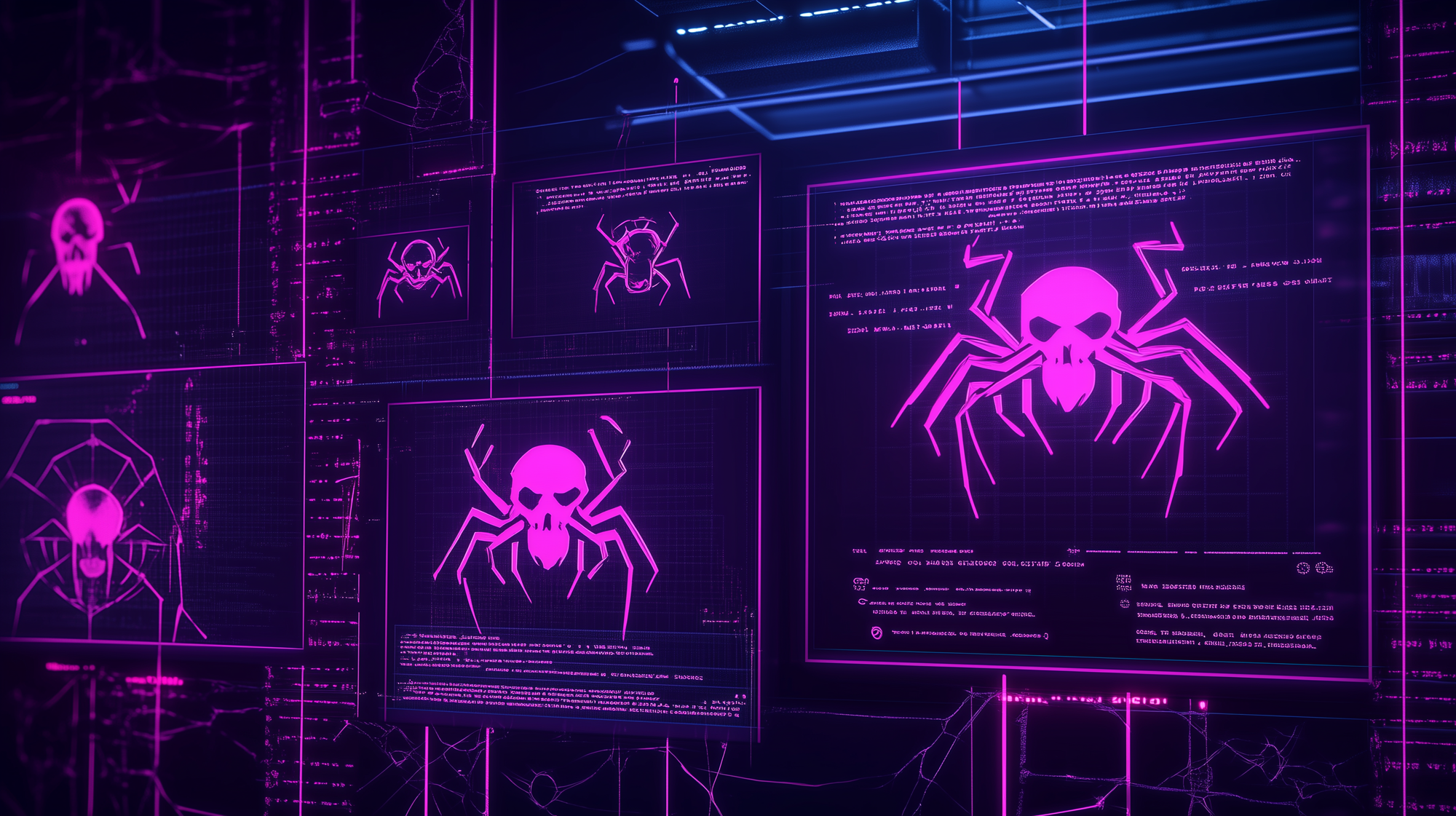
Are Supply Chain Attacks the Achilles Heel of Cyber Security?
Supply chains have become both a lifeline and a vulnerability. Adversaries have identified these interconnected systems as prime targets, exploiting weaknesses to launch devastating attacks. The urgency to understand and defend against these insidious threats has never been more critical.
Supply chains have become both a lifeline and a vulnerability as part of the intricate web of modern business operation. Adversaries have identified these interconnected systems as prime targets, exploiting weaknesses in third-party vendors and trusted relationships to launch devastating attacks. As supply chains grow more complex, the urgency to understand and defend against these insidious threats has never been more critical.
Supply chain attacks are not a new phenomenon, but their frequency and sophistication have surged in recent years. These attacks leverage the interconnected nature of modern supply chains, where a single compromised vendor provides adversaries with access to numerous organizations. This tactic allows threat actors to bypass robust security measures implemented by primary targets by infiltrating through less secure third parties.
One of the most notorious examples is the SolarWinds attack, which was exposed in December 2020 and essentially ruined everyone's end-of-year holidays. Likely perpetrated by Russian Nation State threat actor COZY BEAR, the adversary infiltrated the software provider SolarWinds and inserted malicious code into their Orion software. The updated software was then distributed to thousands of SolarWinds customers, including major corporations and U.S. government agencies, through the standard SolarWinds update mechanism. The ripple effects were profound, leading to widespread data breaches and significant operational disruptions.
The recent CrowdStrike update issue from July 19, 2024 serves as a stark reminder that even trusted cyber security providers are not immune to vulnerabilities, highlighting a lesser-considered form of supply chain attack. In this instance, an update intended to enhance security inadvertently caused approximately 8.5 million endpoints to blue screen and remain caught in a constant reboot loop until manually touched and fixed by administrators.
While the incident did not involve malicious code inserted by external threat actors, it underscores the inherent risks within the software supply chain. Even reputable vendors can unintentionally distribute compromised updates, emphasizing the critical need for rigorous testing and validation processes. This incident reveals how the complexity of supply chains can create opportunities for vulnerabilities, necessitating comprehensive vigilance across all levels of software deployment.

How are Supply Chain Attacks Perpetrated?
Understanding the techniques employed in supply chain attacks is crucial for developing effective cyber defense strategies. These attacks often begin with extensive reconnaissance, where adversaries identify vulnerable third-party vendors within a target’s supply chain. Once a suitable entry point is found, attackers deploy a variety of tactics to infiltrate and exploit the vendor’s systems.
The following are the primary supply chain attack methods used primarily by Nation State, and eCrime threat actors:
- Malware Insertion
Adversaries inject malicious code into software updates or legitimate applications provided by third-party vendors. This malware activates once it reaches the target, compromising critical systems and data. The SolarWinds attack exemplifies this devastating tactic.
- Credential Theft
Malicious threat actors use phishing and social engineering to harvest credentials from third-party vendors. They then use these stolen credentials to infiltrate vendor networks, and access client systems. The Target breach in 2013, caused by a compromised HVAC vendor, highlights the severe risks of credential theft, as well as how long supply chain attacks have been ongoing.
- Exploiting Software Vulnerabilities
Threat actors exploit unpatched vulnerabilities in third-party software to gain unauthorized access to target networks. These exploits can lead to widespread disruption and data breaches. The NotPetya attack in 2017, originating from compromised Ukrainian accounting software, demonstrates the catastrophic impact of such exploits.
- Hardware Compromise
Adversaries manipulate hardware components during manufacturing or distribution (sometimes referred to as interdiction) to introduce vulnerabilities. These compromised devices are then integrated into target networks, providing a hidden backdoor for future attacks. Such hardware manipulation can lead to undetected long-term espionage and data theft. These attacks are often perpetrated by Nation State adversaries because of the high degree of complexity required to perpetuate such an attack.
- Service Provider Exploitation
eCrime adversaries target managed service providers (MSPs) and other critical service providers to access their client networks. By compromising a single MSP, adversaries can simultaneously attack multiple organizations. The 2021 Kaseya incident underscores the massive damage potential of service provider exploitation.
The stakes in the fight against supply chain attacks are extraordinarily high. The consequences extend far beyond immediate financial losses and can undermine an organization’s competitive edge, erode investor confidence, and stifle innovation. Furthermore, compromised supply chains can lead to breaches of sensitive information, threatening national security and diplomatic relations.
The 2021 attack on Kaseya, a managed service provider, affected hundreds of businesses globally. PINCHY SPIDER, an eCrime adversary responsible for the REvil ransomware-as-a-service, exploited a vulnerability in Kaseya’s software, leading to widespread ransomware infections among their clients. This attack not only caused significant financial damage, but also disrupted operations across various sectors, highlighting the far-reaching impact of supply chain vulnerabilities.

Cyber Defense Strategy?
Defending against supply chain attacks requires a multifaceted approach, combining advanced technology, robust policies, and continuous vigilance. It all begins with Cyber Threat Intelligence (CTI) to inform the organization on the adversaries most likely to target them, and the tradecraft those threat actors employ when conducting their malicious attacks.
Organizations must perform thorough vendor assessments regularly. This task is ongoing, not a one-time effort. Routinely review the vendor’s security policies, conduct audits, and ensure adherence to industry standards and cyber security best practices. Establish clear contractual requirements for security measures and compliance, and enforce these standards rigorously, especially when a vendor fails to meet the agreed-upon security posture.
Implementing next-generation security solutions, such as Endpoint Detection and Response (EDR), is absolutely critical. Legacy endpoint solutions relying on signature updates are outdated and ineffective, having failed to provide adequate protection for years. These obsolete systems cannot detect or prevent sophisticated modern attacks, making EDR indispensable for robust, real-time threat detection and response. Transitioning to EDR ensures organizations stay ahead of evolving threats, and significantly enhances overall security posture.
Using CTI to develop advanced SIEM detection engineering rules is essential for achieving comprehensive visibility into adversary actions across the entire estate. Enhancing the next-generation SIEM with high-fidelity CTI indicator feeds is another crucial step significantly boosting detection capabilities. This proactive approach enables organizations to continuously monitor both third-party vendors and their own networks, swiftly identifying and responding to suspicious activities.

Dark web monitoring is crucial for defending against supply chain attacks because it provides early warning signs of potential threats and breaches. For example, when a supply chain partner is targeted by ransomware, they are often too overwhelmed to promptly notify all their customers. However, eCrime adversaries frequently post details of these attacks on their ransomware dedicated leak sites (DLS). By actively monitoring the myriad DLS platforms, organizations gain critical visibility into attacks affecting their trusted partners.
Early detection is a primary driver for supply chain dark web monitoring. It allows for swift remediation and proactive mitigation measures, significantly reducing the risk of successful supply chain attacks. Dark web monitoring not only minimizes the impact of these threats but also enhances overall cyber security resilience, ensuring robust protection against evolving adversaries.
Supply chain attacks are the achilles heel of cyber security because they exploit the very trust and interdependence organizations rely on for their operations. These attacks penetrate through seemingly secure defenses, targeting vulnerable third-party vendors, creating hidden backdoors for adversaries. The ripple effect of a single breach can devastate multiple entities, causing widespread disruption and significant financial and reputational damage.
Organizations need to appreciate the urgency to fortify their supply chains against these insidious threats. By prioritizing robust cyber security measures, continuous monitoring, and proactive defenses, organizations can shield their critical operations from the catastrophic impact of supply chain attacks, and ensure their resilience in this increasingly interconnected world.
Supply chain attacks represent a clear and present danger demanding immediate attention. By understanding the methods and motivations of cyber adversaries, organizations can understand what proactive steps to employ to protect their own, and potentially even national security.
The battle against supply chain attacks is ongoing, but with vigilance, collaboration, and advanced security measures, organizations can successfully defend against these covert threats and safeguard their digital future.






